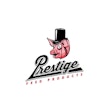
Alltech’s 2021 Agri-Food Outlook focuses on trends that largely resulted from COVID-19 pandemic
While China’s quick rebound back to its place as the world’s largest feed producer is Alltech’s top story of its 2021 Agri-Food Outlook, the industry’s other trends stem primarily from the COVID-19 pandemic.
The events of the past year caused a shift in supply chains to trust-based transactions, saw the rise of ecommerce, made health a consumer priority, and created innovation through empathy and inclusion.
Alltech highlighted these five trends in its 2021 Agri-Food Outlook, presented in a virtual event on January 26.
-
China’s resurgence
China’s pig herd was decimated throughout the past two years, as African swine fever (ASF) spread quickly throughout the country. But, in 2020, China has seen a faster-than-expected recovery.
“The swine market in China came back faster than anyone would have expected,” said Jonathan Forrest Wilson, president of Asia at Alltech.
China’s pig production capacity has recovered to 90% of its 2017 numbers, according to Winnie Jia, director of customer experience at Alltech China, and growth is expected to continue.
“China has exceeded expectations, with an incredible rebound in 2020. It has resumed the position as the No. 1 feed-producing country, and it started 2021 with strength,” said Mark Lyons, president and CEO of Alltech.
Wilson said the industry has largely restructured, with backyard farms replaced with modern, large-scale facilities.
“The reduction in backyard farms has really increased the need for modern compound feeds. Waste that was previously fed to pigs is no longer an acceptable feedstock,” he said.
Poultry prices in China improved slightly in the second half of 2020, “but performance continued to be weak and the world market demand for poultry has recovered steadily and the supply is growing rapidly,” Jia said.
In the ruminant market, “the feed costs are rising, and overcapacity and biosafety are still the three main challenges for the whole industry,” she said. “We expect there will be more investment in the breeding program of beef cattle and sheep this year.”
-
Shifts in supply chain to trust-based transactions
Global food supply chains faced great challenges due to the pandemic, but remained strong, Lyons said, adding that the past year has created demand for more trust and transparency from food producers.
“After six years of abundant global grain supplies and relatively stable commodity markets, we have now entered a period of tightening supplies and strong demand, resulting in a 57% increase in corn prices and a 52% increase in soybean meal prices during the last five months. These are price levels that we haven’t seen since 2014,” said Eric Glenn, global purchasing and supply chain director at Alltech.
“Premix companies are also telling me that logistics remain a concern for shipments out of China, that there is a lot of congestion at import ports and that truck freight within local markets has been tight,” Glenn said. “This has led to higher prices for vitamins and amino acids that many people expect will continue into the second quarter. Amino acids like lysine and methionine are also expected to be in strong demand as commodities like soybean meal and corn have increased in price.”
While food producers face those challenges, Kathryn Britton, senior director of operations at IMI Global, said they also must realize consumers’ growing desire for more transparency in food and livestock production.
“Because we’re able, as an industry, to have a story about food production and translate that through the supply chain, consumers were able to continue to trust in the food that they were purchasing,” she said.
It’s important to consumers that food companies tell an “accurate, authentic story about food.”
“If we don’t know the source, if we don’t know where that feed product is coming from, or where that animal is coming from, and then be able to track that through the supply chain, we can’t tell an authentic story to the consumer about that product.”
-
Rise of ecommerce
Ecommerce exploded in 2020 as a result of lockdowns and stay-at-home orders related to the pandemic. Now that consumers have become accustomed to ordering more things online, companies need to build on the trust that has been created and build their brands.
“Nobody wants to buy from a brand they don’t know about. Quality of the product, traceability, these are all something brands need to consider,” said Anand Iyer, digital marketing manager at Alltech.
He said there are several things companies can do to build a good rapport with customers.
“A comprehensive and easy-to-understand privacy policy, partnership badge, contact information and social proof are great ways to build trust and credibility,” he said. “Personalization, exceptional customer service and one-to-one relationship will help build trust with your customers.”
-
Health as a consumer priority
Health became an even greater priority for consumers in 2020, “strengthening a trend that was already underway,” Lyons said. “We started to seek out health-boosting foods, and even as restrictions lifted, these new, healthier habits continued. This trend will have major implications for the food supply chain.”
Nikki Putnam Badding, director of Acutia and human nutrition initiatives at Alltech, said fear and functionality are drivers of health purchases.
“Fear has always been a purchase driver in the health space,” she said. “Over the last 10 years, we’ve seen health-conscious consumers turn to functional foods, or foods with health benefits above and beyond the norm, like selenium-enriched eggs or DHA-enriched milk, to give them a greater sense of control over their health and well-being.”
Reinforcing previously mentioned trends, she said trust and transparency are becoming more important for consumers, who traditionally base their food purchases on price, taste, familiarity and health.
“But gaining in popularity is the review and consideration of the entire product life cycle, from welfare to supply chain transparency to brand alignment with personal values,” she said.
-
Innovation through empathy and inclusion
Businesses face the challenge and opportunity of using empathy and inclusion to drive innovation and collaboration.
“Innovation is fueled by cultures of collaboration where there’s an openness to every idea, where every person can be seen, heard and valued for their contributions,” Lyons said. “There’s never been more pressure on businesses, nor has there ever been more opportunity.”
Bianca Martins, general manager at Alltech Mexico, said companies should have inclusion programs – not just diversity goals.
“We talk about diversity, we talk about equity, but inclusion is much stronger than anything,” she said. “Diversity is the traits and characteristics that make people unique, but inclusion refers to the behaviors and social norms that ensure that people feel welcome and comfortable to be part of something really important.”
Companies can support inclusion by having a clear mission and purpose, showing empathy, understanding that every employee brings unique experiences, and having an inclusive culture, Martins said.

















